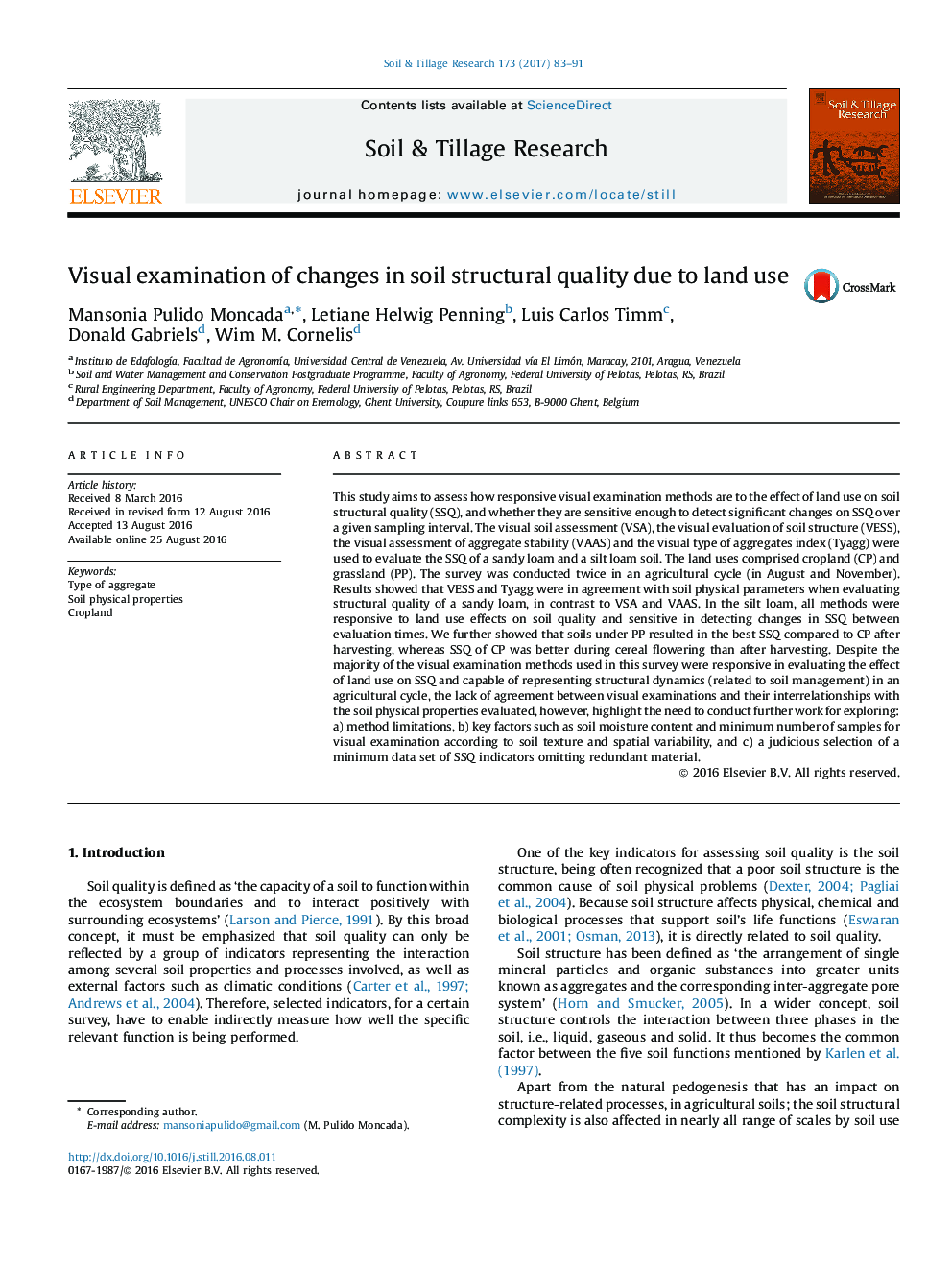| کد مقاله | کد نشریه | سال انتشار | مقاله انگلیسی | نسخه تمام متن |
|---|---|---|---|---|
| 4927489 | 1431830 | 2017 | 9 صفحه PDF | دانلود رایگان |
- Visual examinations were capable to capture soil structure dynamics within an agricultural cycle.
- The results support that an overall evaluation of soil structural quality must be preferred.
- We confirms the link of soil management with changes in type of aggregates.
This study aims to assess how responsive visual examination methods are to the effect of land use on soil structural quality (SSQ), and whether they are sensitive enough to detect significant changes on SSQ over a given sampling interval. The visual soil assessment (VSA), the visual evaluation of soil structure (VESS), the visual assessment of aggregate stability (VAAS) and the visual type of aggregates index (Tyagg) were used to evaluate the SSQ of a sandy loam and a silt loam soil. The land uses comprised cropland (CP) and grassland (PP). The survey was conducted twice in an agricultural cycle (in August and November). Results showed that VESS and Tyagg were in agreement with soil physical parameters when evaluating structural quality of a sandy loam, in contrast to VSA and VAAS. In the silt loam, all methods were responsive to land use effects on soil quality and sensitive in detecting changes in SSQ between evaluation times. We further showed that soils under PP resulted in the best SSQ compared to CP after harvesting, whereas SSQ of CP was better during cereal flowering than after harvesting. Despite the majority of the visual examination methods used in this survey were responsive in evaluating the effect of land use on SSQ and capable of representing structural dynamics (related to soil management) in an agricultural cycle, the lack of agreement between visual examinations and their interrelationships with the soil physical properties evaluated, however, highlight the need to conduct further work for exploring: a) method limitations, b) key factors such as soil moisture content and minimum number of samples for visual examination according to soil texture and spatial variability, and c) a judicious selection of a minimum data set of SSQ indicators omitting redundant material.
Journal: Soil and Tillage Research - Volume 173, November 2017, Pages 83-91
